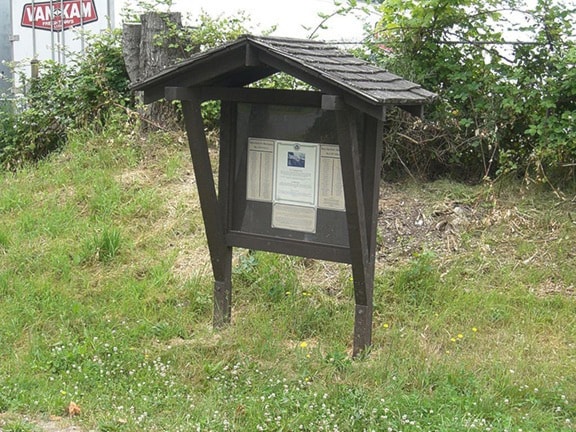So notorious were Island coal mines for their fatalities (at least 1,000 workplace deaths so far as we know) that, today, we might be forgiven for thinking that the term “mining safety” was an oxymoron. A perfect case in point is this short paragraph which appeared in a July 1881 issue of the Nanaimo Free Press:
“A Reno man has invented a safety-cage [elevator] to be used in mines, so arranged that it can be stopped at will at anywhere from one inch to five feet, in any part of the shaft, by the men on the cage, and is entirely independent of the engineer in charge...”
Ah, but new technology costs money. So does maintaining existing equipment. Thus it comes as no surprise to read, in the same newspaper, that Frederick Wild, pit headman and weighman at the South Wellington Colliery, had plunged to his death because the elevator cable snapped.
He was delivering four sacks of oats for the pit ponies and, upon entering the cage, gave the order to lower him to the bottom. No sooner had the operator set the hoist in motion than the cable broke and, horrified, he watched the elevator begin its plunge. With Wild hanging on, “down, down went the cage for a distance of 140 feet, there breaking through the large timbers on the top of the water lodgement, and smashing the case and car in a frightful manner.”
As it did poor Fred Wild. When the first miners, who hadn’t known of his errand, picked their way through the wreckage they were horrified to find his mangled body within the crushed timbers. Overman Haggarty thought he felt a faint pulse but it quickly became apparent that he was mistaken. Wild had broken his jaw and both arms, and suffered extensive lacerations to his lower limbs although it was his internal injuries that killed him.
An employee of the South Wellington Mine (not today’s South Wellington but by Divers Lake north of Nanaimo) since its opening, he was said to have been highly respected by friends and co-workers. Unmarried, he was born in England where his parents remained. As a member of the Black Diamond Lodge, No. 5, IOOF, he was buried under its auspices “in the presence of a large concourse of friends and associates”.
Because the provincial government had recently made coroner’s inquests optional rather than mandatory, the true cause of Wild’s death became a matter of conjecture and rumours. Popular concensus favoured the cable having somehow slipped off its pulley and become entangled in the gear, resulting in its being severed. (All this in a matter of seconds.) So clean was the break that it looked as though “it had been done with some sharp instrument”. On the bright side, the case could be made that the cable had been replaced within the past four or five months, this report contradicting rumours that some miners had refused to go up or down the shaft because of its worn condition.
It was Mines Inspector Archibald Dick’s opinion that the cable had been cut or it broke after slipping from its pulley, having “every appearance of being a good sound one, and no complaint [has] been previously made to [me]”. Earlier that morning, the elevator machinery had successfully completed several lifts greater than that required for Wild and his cargo.
When Coroner Spalding declined to become involved, the Free Press argued, “The present law is radically wrong. An inquest should be held on every unnatural or suspicious death. It is a right due to the living as well as the dead, and effectually quietens the many absurd and injurious rumors that get abroad when an accident occurs.”
Perhaps in response to public demand, Spalding did order an inquest. Interestingly, Supt. of B.C. Provincial Police Todd attended. Upon hearing the testimony of seven witnesses, and after due deliberation, the jury ruled that “Frederick Wild came to his death by the parting of the [wire] rope at the South Wellington shaft, caused by neglect in not attending properly to the pulley wheel thereby causing the rope to run off the pulley, by a large lump of tar being in the pulley.
“The jury would also recommend that safety catches be used on cages in the different mines, and we also think that the Inspector of Mines should see that the rules of the Mining Act should be put in force.”
All too logical, all too obvious, and all too late for Frederick Wild.
www.twpaterson.com
